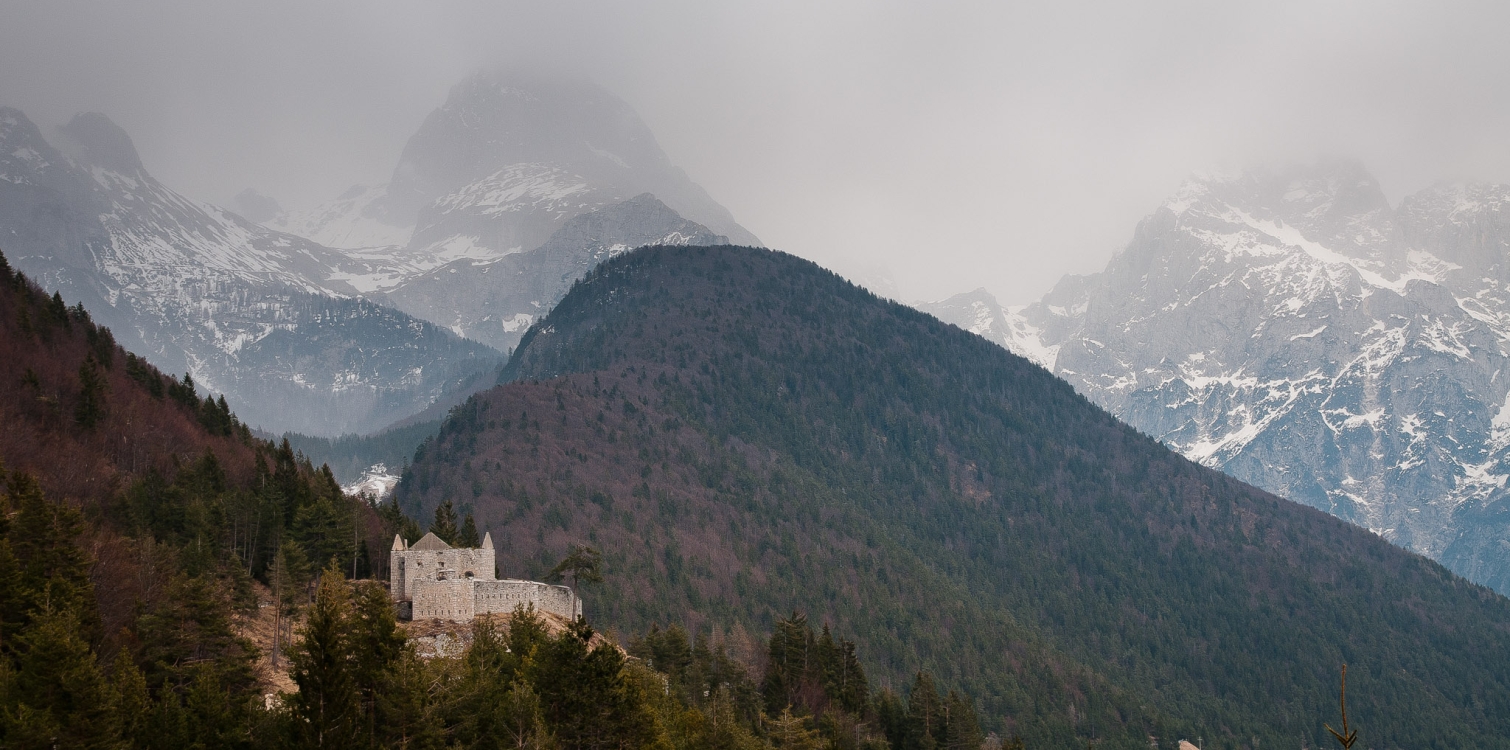
Source: Wikipedija
Already in Roman times and during the Middle Ages, an important trade route passed through the pass. The first fortress began construction even before Austrian Emperor Francis I. declared war on the French. It was designed in the shape of a regular rectangle and was poorly equipped when Napoleon's army arrived in 1809. Only the upper central fortress building was completed.
Napoleon's soldiers attacked the fortress from two directions, but Commander von Hermannsdorf refused to surrender. Most of the Austro-Hungarian soldiers died in the battle, while the remaining ones were captured by the French, who then set the fortress on fire. The stronghold was completely destroyed.
Two decades later, a proposal was made for the construction of a new fortress at the same location. It was planned as a fully walled stronghold with high earthworks and stronger armament. The construction was accelerated by the newly emerging social conditions. In 1848, a new complex of two fortresses was built, which were later converted into a military warehouse.
That same year, Emperor Ferdinand I. commissioned the famous cast-iron sculpture of a wounded lion to be placed beneath the upper fortress in memory of Johann Hermann von Hermannsdorf and the brave soldiers who fell in the battles of 1809. The mentioned battle is also commemorated by a tombstone leaning against the fortress wall and a collective vault of the fallen, which was arranged by the Austro-Hungarian soldiers in 1916.
The vault was restored in 1995.

